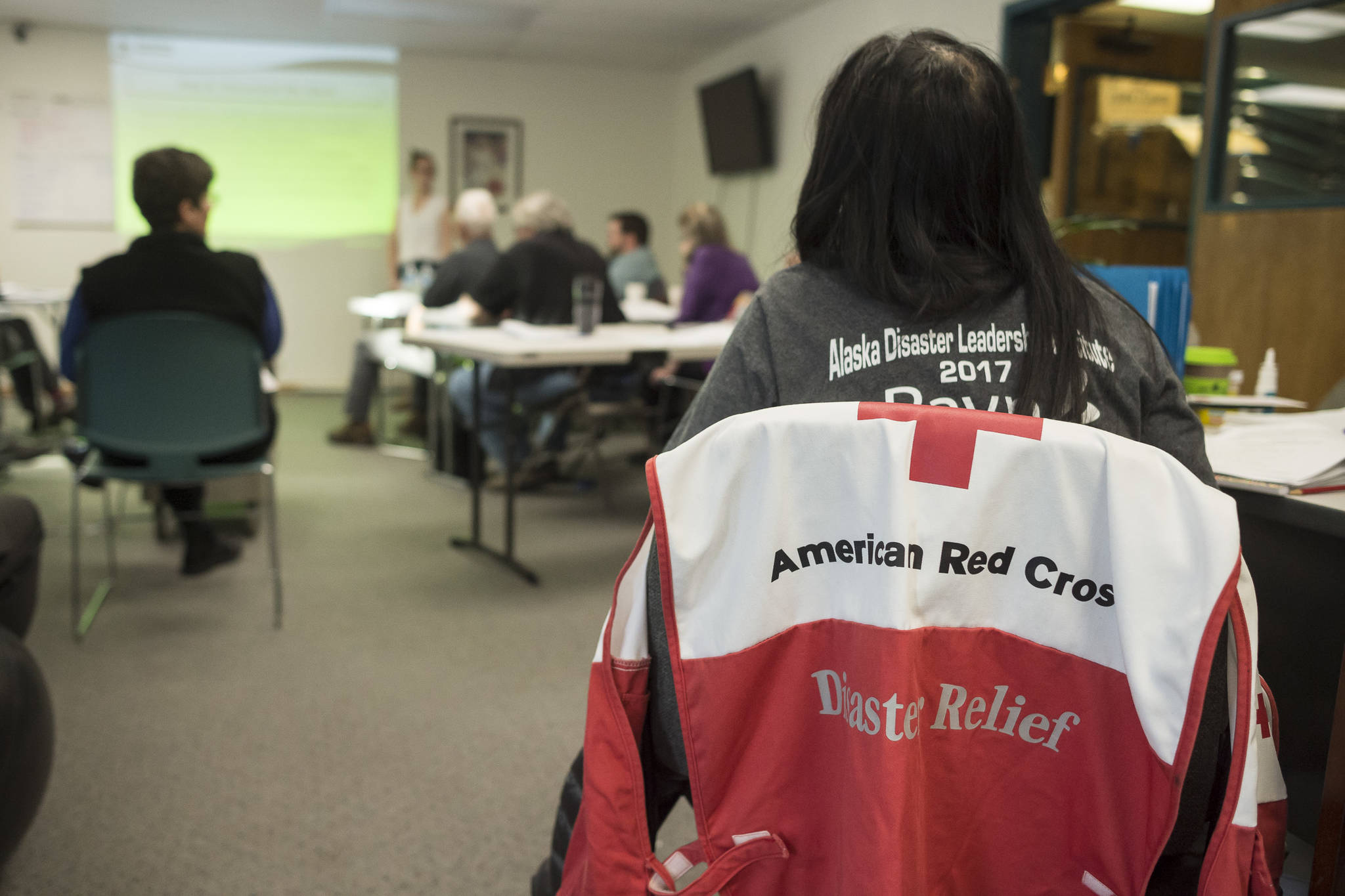When Pam Roth sees footage of natural disasters on television, she can’t help but want to get involved.
“You can’t look at the pictures of the fires and the burnt-out cars and not want to do something,” Roth said. “You just can’t do it.”
Roth, the community volunteer coordinator for the American Red Cross in Ketchikan, was in Juneau this weekend to attend the Southeast Disaster Academy. The three-day training event was for people of all experience levels, looking to prepare and unite volunteers from across the region.
Southeast Disaster Program Manager Andrew Bogar said training that’s this comprehensive usually takes place in Anchorage, meaning that not many people from Southeast can go. Bogar and other Red Cross leaders around the state worked to get events like this set up all around the state instead of just in the central hub.
“There is an Alaska outside of Anchorage,” Roth said. “And to Andrew’s credit, there is a Southeast outside of Juneau.”
Friday’s class was for people such as Roth who have a decent amount of experience with the organization. Roth was deployed to Virginia and North Carolina this summer to help with Red Cross operations in the wake of Hurricane Florence. Friday’s class was aimed at preparing these experienced volunteers to coordinate and delegate to less-experienced volunteers in disaster scenarios.
There were people from Ketchikan, Haines and Sitka there Friday, and Bogar said there are also Red Cross volunteers on Prince of Wales Island and in Petersburg. Even a few hours into the training, Roth found it valuable.
“Largely, what I’m really happy about is getting to know my fellow co-workers, my fellow volunteers from Southeast,” Roth said. “It’s kind of interesting, in Alaska in general, geographically we’re so huge and you hear about these people and you might even talk with them on a teleconference, but you just don’t get to put the faces to it.”
Preparedness and Case Work Specialist Bridget Thomson coordinates preparedness exercises around Southeast, helping people prepare and plan for a disaster. She said it’s important to be able to get people this training so they can go out and tell their friends and family.
“It’s kind of like a huge ripple effect,” Thomson said. “When you have five people that know more about being prepared, they in turn can teach five more people about building a preparedness kit or just having their families be prepared for whatever that may be.”
Bogar and Thomson both said it’s particularly challenging to respond to a disaster in Southeast communities due to how isolated they all are. As Thomson pointed out, it’s not like other cities down the road will send extra ambulances to Juneau in an emergency. People in Juneau will have to address their needs with what’s already here.
Thomson said these volunteers can go back to their communities, spread the word and make clear to people how important it is to have supplies set aside and a plan in mind.
“It doesn’t need to be this taboo thing. Like, ‘Oh, you have a preparedness kit? What are you preparing for? Doomsday?’ It’s not that. It’s really simple stuff that anybody can do,” Thomson said.
• Contact reporter Alex McCarthy at 523-2271 or amccarthy@juneauempire.com. Follow him on Twitter at @akmccarthy.

